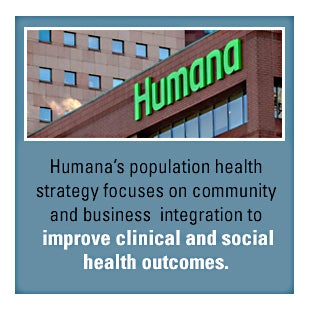

3 Keys to Meet Individuals’ Health and Social Needs

In the span of just a few days in late May, two of America’s largest health plans increased their efforts to support individuals’ complex health and social needs.
UnitedHealthcare launched Community Catalyst, an initiative that includes 23 programs involving collaborations with community-based organizations and health centers. Community Catalyst’s goal will be to close gaps in care and address health equity issues, food insecurity among seniors and the health needs of those in public housing.
Humana, meanwhile, partnered with Chicago-based NowPow, a local community referral platform that will serve members in the payer’s Medicare Advantage and Medicaid plans. Through the platform, Humana will screen members for social needs and generate a personalized list of community referral resources to assist members with services like food delivery or social isolation support. The partnership is part of Humana’s Bold Goals population health strategy begun in 2015 to focus on both community and business integration to improve the clinical and social health outcomes of its members.
 These may seem like small steps, but a recent Health Affairs report notes that finding better ways to integrate health care with the social services sector will be vital to accelerating progress on improving health outcomes. Likewise, a wide range of funding sources (payers, philanthropies, state legislatures, etc.) will be needed to provide startup funds so that communities can build multisector networks and researchers can gather evidence related to implementation and cost-effectiveness of various integration approaches. In addition, financial incentives will have to be aligned among the stakeholders working on this situation so that all share in the rewards of a more efficient, effective and lower-cost delivery system.
These may seem like small steps, but a recent Health Affairs report notes that finding better ways to integrate health care with the social services sector will be vital to accelerating progress on improving health outcomes. Likewise, a wide range of funding sources (payers, philanthropies, state legislatures, etc.) will be needed to provide startup funds so that communities can build multisector networks and researchers can gather evidence related to implementation and cost-effectiveness of various integration approaches. In addition, financial incentives will have to be aligned among the stakeholders working on this situation so that all share in the rewards of a more efficient, effective and lower-cost delivery system.
A recent report from the Texas Health Improvement Network, funded by the Episcopal Health Foundation, covered ways to improve integration of services and other efforts to understand what is being implemented and make recommendations for future projects. The report highlights strategies for success.
3 Strategies to Address Social Needs
Link Technologies with Social Sector Partners
Technology that is integrated across health and social services systems is optimal. Platforms that enable health care organizations to screen patients for social needs and identify potential resources in their community are a good start, but the goal should be to integrate such software both with internal electronic health records and with databases and systems on the social-sector side. This will enable more effective hand-offs between the sectors, better tracking of outcomes and more coordination between health care and social services organizations.
More Coordination Will Enable Better Outcomes
The most effective integrations typically involve organizations that provide both health and social services themselves. For other organizations, the more realistic opportunities arise from closer coordination among multiple organizations, including providers, payers and community groups. These can involve connecting referral systems; forming “umbrella” coalitions, which bring together stakeholders across multiple sectors around a common goal; and convening work groups focused on integration.
Grow Your Base of Evidence
Documenting the effects of social determinants of health on individuals is immensely important, but so too is developing and documenting effective strategies for addressing social needs. Deepening this evidence base and sorting out what works will help make the case for why payers should shift more resources toward funding integration.
A recent AHA Center for Health Innovation Transformation Talks video “Social Determinants of Health: Leveraging the Community and Innovation to Improve Health,” provides more insights on ways to achieve success with social-sector partners and payers.



